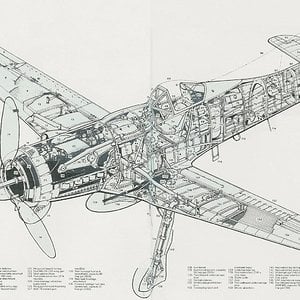Jumo was probably the 1st among the 'mainstream' German aero engines' companies to introduce a 'proper', pressure oil feed via the crankshaft, with DB following suit years later. BMW was tackling that issue by some time 1940-41.To further this, there were 3 companies, not 3 factories.
BMW was the 1st to chrome-plate the valves, again DB following suit about a full year later.
Wholesale cancellation (that 'deleting' the development in company actually is) might mean the other companies don't get the benefits of cross-pollination, as imperfect it already was in Germany. Having company A just as another source, without a competing engine, means that company B grows complacent, too, even during the war.
tl;dr - making the things simple is okay, but making them too simple can make the things even worse

